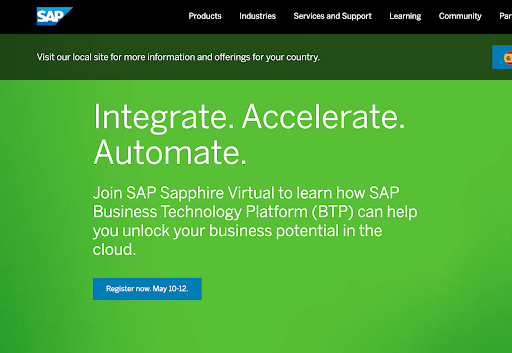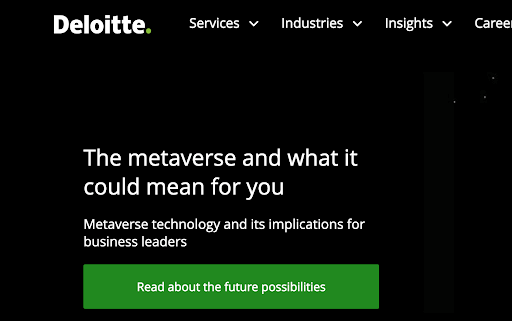In ads seeking copywriters, employers often specify “B2C experience.” Or they might say with emphasis: “B2B only! No B2C” What are the differences between the two types of writing, and does it really matter so much if a copywriter has experience in one or the other?
B2B stands for business-to-business writing, and yes, it matters to have experience in the right copywriting niche.
B2B is when words are put together in such a way as to interest businesses in buying from other businessesB2C, on the other hand, means business-to-consumer writing, and it involves using language and tone that appeal more to individuals.
What makes copywriting B2B?
Obviously, B2B is targeting a completely different audience. And since knowing your audience is at the heart of good copywriting, it is there we’ll look for what matters in B2B copywriting.
You’re writing to a group, not an individual. But they’re still human
There are usually several people involved in a buying decision in a business, so that makes it a little complicated. You aren’t depending on triggering a perhaps-emotional purchase impulse in a single individual, but on building consensus among a team. The copy must appeal to each of these team members on some critical level.
But that doesn’t mean the writing has to be so generalized as to be boring. Or overly formal (see below). The individuals in that group still are feeling some pain—or they wouldn’t be looking for a product or service like yours—and they appreciate it when you name that pain, as well as come up with a solution that would benefit them individually, in addition to the company as a whole.
Take SAP’s webpage, which uses crisp, direct language to grab attention, then directly addresses the reader as “you” when explaining the benefit of its technology to the reader.

At the end of the day, it’s still a human being or a team of human beings making the purchasing decision. But they still want the best product or service for their needs, and they want the value of that product or service stated in ways that sound human.
Note, if you, as a writer, are being asked to talk to people whose interests are too distant from each other, you are being set up for failure. If you’re being asked to address the pain of the VP of technology and the CIO, you can probably do it. But don’t try to go for a developer and the CIO at the same time. You’ll probably miss both targets by trying to find a middle ground.
Understand the kind of journey they’re on
The B2B sales cycle, especially for higher-priced products or services, is typically a lot longer than the B2B cycle. So your writing can have many different flavors based on where the audience is in the so-called “customer journey.” The five phases of the customer journey are awareness, consideration, purchase, retention, and advocacy.
Sometimes you’re just looking to make them aware that you exist—that you have a solution to a problem that they have. Sometimes you want to make a comparison to the current market leader by pointing out what makes you different. Sometimes you simply want to push them to buy, ASAP.
This is what HubSpot did with the following copy. It spells out the pain—most sales teams are on a mission to collect more needs—and gives a reason that a business should buy the product now. It’s active—starts with a directive verb—and concise. Good all around.

Say it simply, without jargon
It’s okay to be clever—but not too clever so that people can’t grasp your message. Avoid bad jokes—even inside ones that your audience might appreciate. That can fall flat. Often, it’s best to say what you have to say simply and without jargon. Shopify did that, with great effect. And it highlighted its top benefit: that it works. Just what online businesses want to know.

Don’t try and oversell, either. Tell your audience what you do, and how it benefits them. Period. Look at what IBM does. Knowing that its various organizational re-inventions in recent years may have confused the market, they first state what they do, plainly, almost a dictionary definition, and then what they do to benefit clients. Smart writing.

No fluff, but not robotic, either. Try to personalize.
A second-person point of view (POV) is a marvelous thing. You can use it to make everyone who reads copy think that it is meant for them. Of course, you have to have evaluated your audience precisely, otherwise, such a move could misfire. Deloitte, writing for CEOs and other C-suite executives, is counting on the fact that one of the latest pieces of jargon—the metaverse—has not been defined concretely enough for such people to understand how it affects them, and their businesses. The strategy here: define and provide a basic primer on the metaverse without talking down to a high-powered audience. I’d say this copy hit its target.

Emotion has its place in B2B.
So does humor (although see above caution about bad jokes). It’s okay to want your business audience to get pumped up and even excited by your copy. Here’s what Zendesk did—who doesn’t want to be a champion? It’s definitely appealing to the emotions of readers. And the “customer service” part of the message is actually what’s called in web design a carousel—other phrases get swapped in as you wait. Phrases like “no-hassle returns,” “not waiting on hold forever,” social messaging,” and even some human—“sauce on the side.” It all works for me, and I suspect it would bor business audiences as well.

Forget the suit. Business casual is in.
It used to be an unquestionable rule in copywriting: B2B copy was formal. Let the language slip, and business readers would dismiss it as “unprofessional.” How times have changed. Look at Slack’s promise that if you use their product, you’ll “get stuff done.” See how much more natural that sounds these days than something like, “employees will be more productive”? The use of second person (again) contributes to a non-stuffy, fresh approach to talking directly to businesses. Of course, you probably do have some boundaries of what’s acceptable. But they’re so much looser than in the recent past.

Copy that engenders trust
B2B customers, as much as individual consumers, are always searching for something to believe in. They want very much to trust you. But they are also (understandably) suspicious of anyone trying to sell them something. Google’s B2B copy is always witty but understated. Because of its reputation for delivering high-quality products and services to market, we believe them when they tell us, in effect, that their cloud portfolio will help us “build what’s next.” It has echoes of the old Silicon Valley adage that improving tech meant creating something “smaller, faster, cheaper,” but does so in a fresh way. I always look to Google to see how they approach both B2B and B2C copywriting. They have a lot to teach the rest of us.

Copy that nurtures relationships
B2B customers want relationships. At least, they’re always hoping for them. No business wants to switch solution providers frequently—it’s expensive and it upsets the flow of operations. They want to know that you’ll take care of them, and the attention won’t stop once you’ve completed a purchase. First Round Capital copy stresses this, emphasizing that getting funded by them is just a first step in an ongoing relationship.

Copy they’ll remember
Maybe not the exact words. Not like B2C catchphrases and jingles that give us earworms. But if well-crafted, the spirit of the copy will prevail. That’s why it is critical that your voice, tone, and message is consistent across all your channels with B2B (B2C also, but that’s another discussion). So, to sum up: lose the jargon and the posturing. Write copy that is crisp, clear, and authentic. If you can infuse some wit or dry humor in it, so much the better. Treat your B2B customers like the humans they are, and you’ll get much further with your messages.

